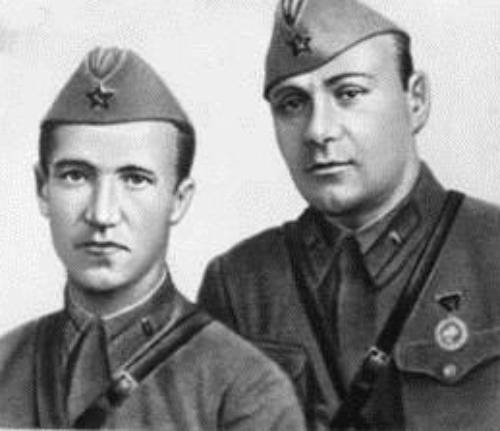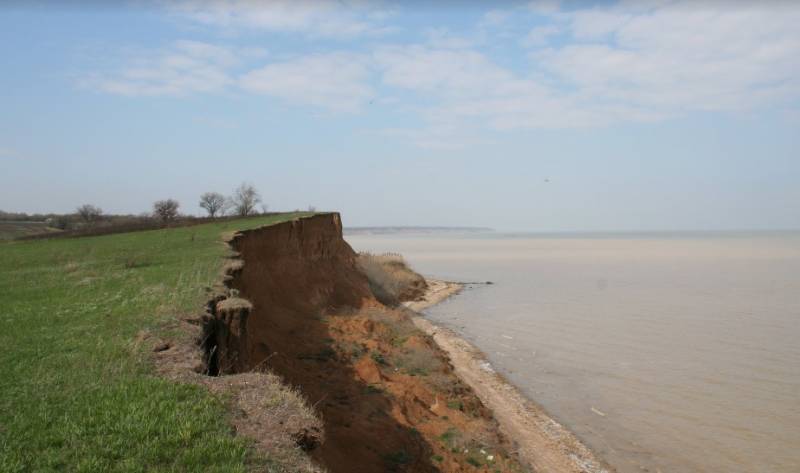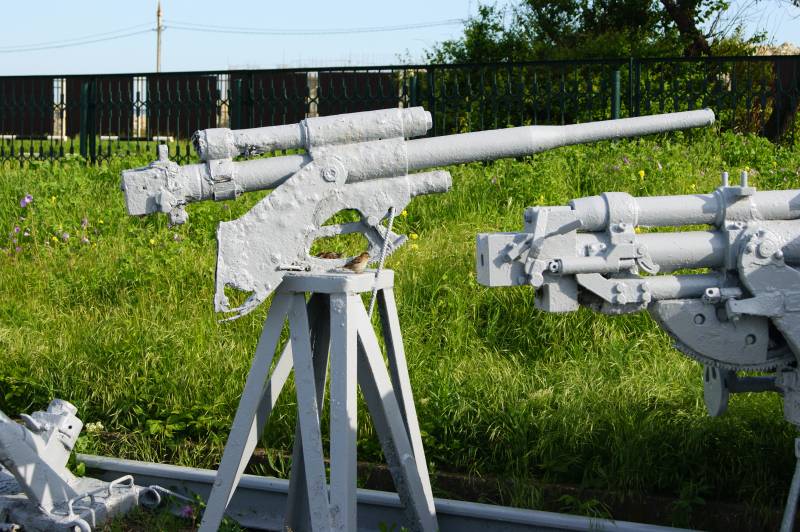Caesar Kunikov: the star and the death of the legendary commander. Part of 2. Taman
At that time, the 13 division of Caesar Kunikov’s patrol boats, based in Azov, was almost completely surrounded by land. Finally, an order was received to depart by sea to Yeisk. It was smooth on paper. 13-th division then had 2-me Seiner "Eagle" and "Strela", as well as 13-y boats. It was necessary not only to save the unit and the personnel of the division from the complete environment, but also to remove the comrades in arms from the partisan detachment "Brave-1". Place all the fighters of the division and partisans on boats and seiner turned out to be impossible. It was decided to put some of the personnel on the fishing boats, which they would take in tow.
As if there were few dangers for a wake column not spoiled by air defense weapons (and this is still putting it mildly), a strong westerly wind broke in the morning of August 2 on the expanses of the Sea of Azov, the waves rose to the 2,5 meter. It is not only dangerous to go out in such weather to boats and seiners on the verge of overloading, and even with the rowboats on the towing cable, it is catastrophically dangerous. The division was in a tragic situation. Remain, therefore, to flood the division and take the last battle, to go to sea - not only to be at risk of dying under the waves, but also, given the maneuverability of such a column, to get under the wings of the Luftwaffe, and, perhaps, to please under the shelling from the shore, if the enemy is already completed the environment of the division. After all, to go far from the coast there was no possibility.
Kunikov decides to go to sea in 19: 00 and risk breaking into Yeisk, sending two patrol boats forward. At the appointed time, the wake column entered the Gulf of Taganrog, sturdier seiners kept a bit more seaward.
Coast at the Sea of Azov at Port-Caton
After passing about 25 nautical miles in Azov, in the area of Port-Katon, already late at night, Kunikov's division noticed light signals coming from the shore and gun shots. The boat sent for reconnaissance found out that the surviving sailors from the coastal battery No. XXUMX had given signals. The fighters of the battery, having spent all the shells, were ordered to blow up the battery and retreat to Yeisk. The first order was executed, but they could no longer depart - the enemy cut the escape routes. According to various sources, the surviving sailors were from 661 to 30 people. In addition, data on the date of evacuation is different. In some sources, 58 of August is indicated (respectively, Kunikov’s division should have come out earlier), in others, 1.
However, this does not change the essence. "Kunikovtsy" in complete darkness, under not very favorable weather conditions, a few dozen people took pictures of a steep bank from a stranger to them. In order to accommodate the new arrivals, Kunikov ordered to leave on board only combat-ready weapons and ammunition, all unnecessary - overboard. And without that, the low-speed column of the 13 Division began to be overwhelmed by the wave, the sailors desperately scooped up the water by any suitable means, including helmets.
Until Eisk, there were less than 5 nautical miles, and it seemed that there was little misfortune, as the Luftwaffe planes met the Kunikovsky column. But this time too, the 13 Division showed amazing survivability. Several times, the Ju-87 dive bombers entered the convoy of boats, but the only target that was hit was a boat, which lost control of close breaks and was thrown onto stones. The crew managed to save.
By this time, Yeisk was already a front-line city. And soon the 13 division should once again become the hope of evacuation for the remaining Yeisk garrison and the wounded. Now the course was taken on Temryuk calling at Primorsko-Akhtarsk. The front was rapidly rolling back to the Caucasus, the Nazis dreamed of oil.
In Temryuk, on the basis of the 13 Division, a separate battalion of marines was formed from the personnel of the Temryuk base ships that failed, the Azov Separate Battalion. Caesar Kunikov was appointed commander, Vasily Petrovich Nikitin was appointed commissar, and Veniamin Sergeevich Theological. The battalion was armed with guns and machine guns taken from ships, but with Kunikov's mastery, this only opened the way for his wit.

Caesar Kunikov (right) and Vasily Nikitin
On August 21, the newly created Azov battalion received one of the first major battles. After artillery preparation, the battalion positions were attacked by the Romanian cavalry. But with the support of the canlodok in the port of Temryuk with the adjustment of the artillery post in the battalion and the friendly machine-gun fire, the attack repulsed both the first and the second without incurring significant losses. However, the difficult situation developed on the flanks and, to avoid encirclement, the “Kunikovtsy” moved to the east of the city.
On August 23, new positions were subjected to methodical shelling. And again the attack of the Romanian cavalry followed. However, now the command of the enemy of the brave Romanian equestrians, who have repeatedly draped off the field, was strengthened by a group tanks. And here we should recall the very mastery and ingenuity of Caesar. He, as colleagues remembered, generally loved and appreciated artisans. Therefore, no matter how soon the war drove him away from the next place, he tried to use his remarkable strength for the good of the Motherland (and do not care how pathetic it sounds, if it's true). So in artisanal conditions in the front Temryuk Kunikov insisted on the creation of "ersatz tanks."
Lifted from the bottom of the ship 45
X-NUMX-millimeter ship guns were installed on auto-platforms (ZIS trucks) from under projector installations. The flooring of these “platforms” was covered with steel sheets, since the usual wooden flooring would have scattered from recoil when firing from the body. At the command, the artillery sailors quickly and secretly advanced to the front edge of the battalion’s defense, fired direct fire and, supporting the defense with fire, also quickly left the position. No matter how ugly these “creations” looked, they did not help much in the defense of the city. Thus, during the attack on the positions of the Azov battalion 45 in August, the enemy lost more than 23 cavalrymen and the 300 tank, and over the whole day the enemy’s losses reached 4 people.
Heavy fighting so drained the Romanian cavalry division, that it had to be removed from the front and sent for re-formation, replacing it with fresh forces. But there was simply no one to replace Temryuk's defenders. The enemy has already approached Novorossiysk. On August 24, the marines of the Azov separate battalion, the 144 and 305 battalions left Temryuk. The last two battalions were combined into a separate battalion of the 144, and the Azov battalion was named 305.
It is under this new “name” that the battalion will cover the withdrawal of Soviet troops from Taman. Until August 29th, the Kunikov battalion was on the defensive, repelling enemy attacks supported by aviation and armored vehicles. The defense stretched from the village of Varenikovskaya to the village of Peresyp on the shore of the Temryuk Bay. Only the personnel of the Kerch Navy remained behind, which, with all available forces, counteracted attempts to land an enemy landing.
At the same time, Kunikov’s battalion itself defended the 17 front of kilometers. Here it should be noted the excellent reaction of Caesar to the changing situation. He felt the line of defense as his own nerve endings, and the slightest irritant responded with sharp opposition. After all, the only way to restrain the enemy with such forces until the first days of September. But this pursued only one important goal - to give time to evacuate the remaining defenders of Taman and the wounded. The enemy units already captured Anapa and took Taman into the ring.
Tired of recalcitrant marines and effective work, despite the size of our artillery, the Nazis began to transfer to Taman fresh 46 German and 3 Romanian divisions.
On the night of September 5, finally, all the fighters of the Taman Peninsula were evacuated, including the composition of the Kerch naval base, what was left of it. However, 305 remained in the cover. After completing the task, the battalion departed on a thin scythe, covered with reeds, between the Black Sea and the Kiziltash estuary. Either the Nazis did not notice the “Kunikites” experienced for such an area, or they did not want to get involved in the battle with the Marines they knew, and regretted the shells, but, blocking the scythe from both sides, they did not make any attempts to liquidate the battalion.
Spit at Kiziltash estuary
A day earlier, on the personal order of the deputy commander of the Novorossiysk defensive area, Sergey Gorshkov, a torpedo boat was sent specifically for immediate delivery to the NOR headquarters, Major Kunikov. Kunikov was instructed to immediately familiarize himself with the position in the NRA, as well as form a replenishment for 305, which in turn was taken off the coast early in the morning of September 6.



Information